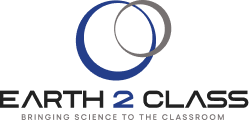LDEO NGSS Summer Institutes: “Teaching about Astronomy” (GED 7214)
Lesson 2: Observing Deep Space
Expect Time Required: 2-3 hr
Submitted by: Date: Time Needed:
DOWNLOAD a Word VERSION DOWNLOAD a pdf VERSION
(Note: Several of the questions require drawings, for which the Word or pdf versions are more suitable.)
Selected NGSS Connections:
MS ESS1.A Patterns of the apparent motion of the Sun, Moon, and stars can be observed, described, predicted, and explained with models.
HS ESS1.A The study of star’s light spectra and brightness is used to identify compositional elements of stars, their movements, and their distances from Earth.
Part A. Instruments for Observing Outer Space
View the related E2C Slide show: “Light and Astronomical Observations”
Telescopes
In the early 1600s, a Dutch lens grinder named Hans Lippershey developed the first telescope (http://www.space.com/21950-who-invented-the-telescope.html). Several years later, Galileo Galilei read about this and created his first instrument. Using this to observe the Moon and planets, Galileo made discoveries that revolutionized human knowledge. Among these was the fact that Jupiter also had moons, challenging the widely-held belief that Earth was the center of the Universe.
The word “telescope” means “far seeing.” Since the early instruments, advances in telescopes have enabled astronomers to look deeper and deeper into Space. This means that we are also able to look deeper and deeper into Time, since Light takes time to travel. (Distance in Space is the subject of another lesson.)
1A. Refracting Telescopes
Lippershey and Galileo used what astronomers call a “refracting telescope.” In the space below, create a simple diagram representing this type of telescope and explain its basic principles.
1B. Reflecting Telescopes
Within a few decades, physicists began to explore techniques to increase the magnification of telescopes and turned to mirrors to gather light. These can be much largest than lenses. Isaac Newton was among the first to create a “reflecting telescope.” Most astronomical observatories today used variations of this type. In the space below, create a simple diagram to representing a refracting telescope and explain its basic principles.
Spectroscopes
In the early 1800s, Joseph Fraunhofer, a famous German glassmaker, used prisms to create the first spectroscope. Spectroscopes divide light into different colored bands. Fraunhofer was the first to combine a spectroscope and telescope, and observed distinctive line in light from the Moon, Venus, Mars, and stars such as Betelgeuse. Several decades later, Gustav Kirchhoff used spectroscopes to identify these lines as “spectral signatures” of various chemical elements. Studies during the 1860s found that sunlight had the same patterns, making it possible to identify the composition of celestial objects. Besides hydrogen, the most abundant element found in the Sun was an unknown, at that time, element: Helium, a name derived from the Greek word for Sun, “Helios.”
Subsequently, spectral analysis of light seen in telescopes coming from planets, stars, and other celestial objects enable us to understand which elements form them. Such studies helped fill in many of the missing parts of the Periodic Table.
In the space below, make a drawing representing a prism and the way it separates white light into its component wavelengths.
Obtain a simple spectroscope and describe two or three classroom investigations you could do with it.
Radio Telescopes and Related Technologies
Karl Jansky was a Bell Labs engineer in the 1930s trying to reduce potential sources of interference in transatlantic radio transmissions. His antenna led to the discovery that some of the interference came from the center of the Milky Way Galaxy in the constellation Sagittarius. Astronomers subsequently built on this to create radio-wavelength telescopes that led to discoveries about the Universe not possible with light waves. These include quasars, pulsars, and masers. Discovery of cosmic background radiation with radio astronomy resulted in the “Big Bang Theory” for the origin of the Universe.
Use resources (which you should cite) to provide a brief 2-3 paragraph description of radio telescopes. As a starting point, you can find many useful links through the NASA educational pages (https://www.nasa.gov/offices/education/about/index.html).
Astronomers expanded the use of non-light parts of the electromagnetic spectrum to learn even more about Deep Space. X-rays and gamma rays have been studied to reveal cosmic processes and events never before recognized.
Use resources (which you should cite) to provide a brief 2-3 paragraph description of discoveries made using X-ray, gamma ray, and other wavelengths.
Building and Using Simple Telescopes
2009 marked the 400th anniversary of Galileo’s first exploration of Space with a telescope. In commemoration, a simplified replica of his instrument was developed. The Galileoscope, developed for the International Year of Astronomy 2009 and still going strong for the International Year of Light 2015, was a joint effort of the International Astronomical Union’s Galileoscope task group and the American Astronomical Society’s Telescope Kits & Optics Challenges working group, with educational support from the Astronomical Society of the Pacific.
Galileoscope kits can be ordered through http://galileoscope.org/.
Obtain a Galileoscope or other simple optical telescope and explore possible uses with students for your classes. Describe several important points that you should consider if you were to incorporate this type of activity into your curriculum.
Examples of Regents Exam Questions
Explore recent Physical Setting/Earth Science exams (http://www.nysedregents.org/EarthScience/) for test items related to this topic. List 3 or 4 questions from recent exams (Year-Number) and explain what information students would need to answer them correctly.

